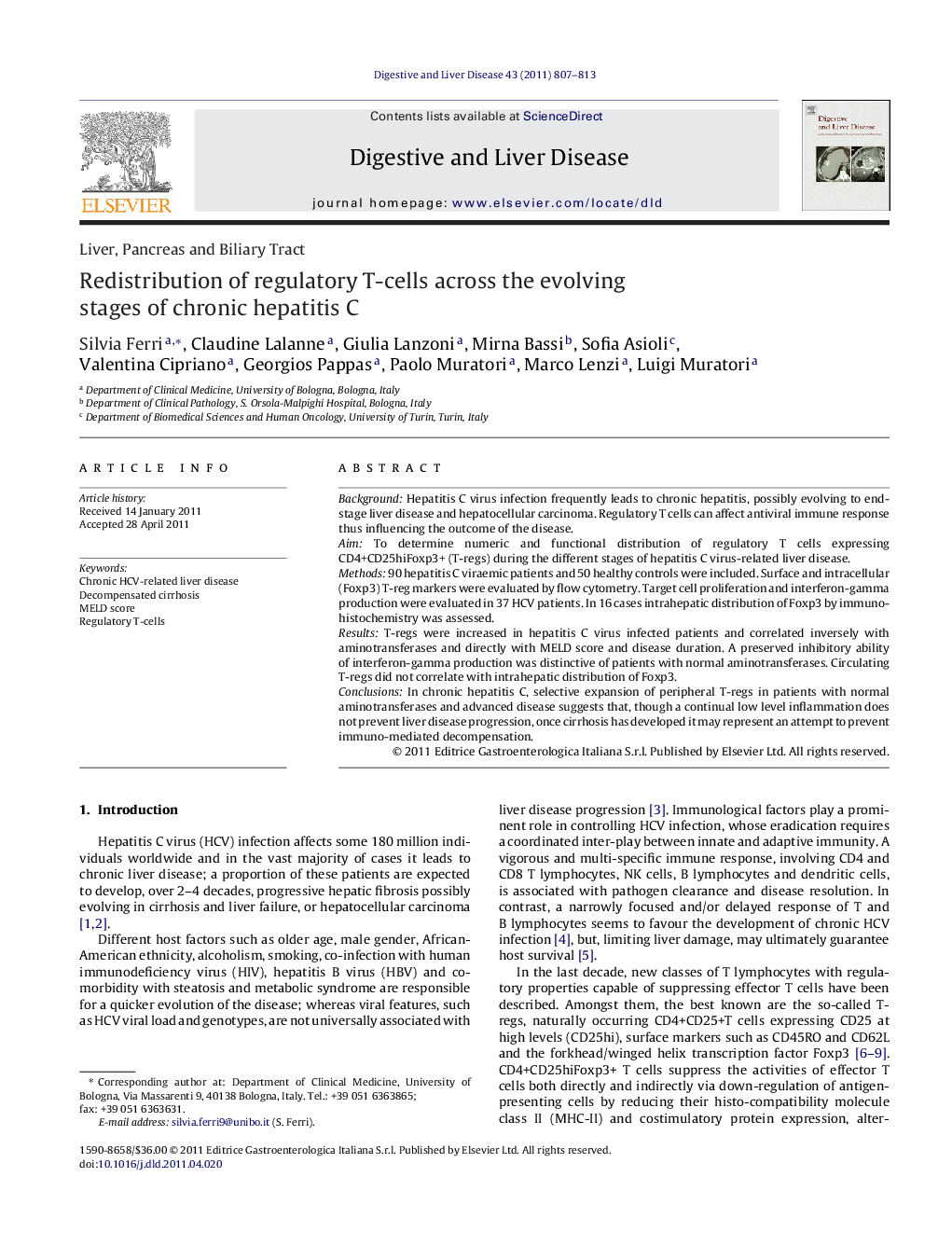| Article ID | Journal | Published Year | Pages | File Type |
|---|---|---|---|---|
| 3263019 | Digestive and Liver Disease | 2011 | 7 Pages |
BackgroundHepatitis C virus infection frequently leads to chronic hepatitis, possibly evolving to end-stage liver disease and hepatocellular carcinoma. Regulatory T cells can affect antiviral immune response thus influencing the outcome of the disease.AimTo determine numeric and functional distribution of regulatory T cells expressing CD4+CD25hiFoxp3+ (T-regs) during the different stages of hepatitis C virus-related liver disease.Methods90 hepatitis C viraemic patients and 50 healthy controls were included. Surface and intracellular (Foxp3) T-reg markers were evaluated by flow cytometry. Target cell proliferation and interferon-gamma production were evaluated in 37 HCV patients. In 16 cases intrahepatic distribution of Foxp3 by immuno-histochemistry was assessed.ResultsT-regs were increased in hepatitis C virus infected patients and correlated inversely with aminotransferases and directly with MELD score and disease duration. A preserved inhibitory ability of interferon-gamma production was distinctive of patients with normal aminotransferases. Circulating T-regs did not correlate with intrahepatic distribution of Foxp3.ConclusionsIn chronic hepatitis C, selective expansion of peripheral T-regs in patients with normal aminotransferases and advanced disease suggests that, though a continual low level inflammation does not prevent liver disease progression, once cirrhosis has developed it may represent an attempt to prevent immuno-mediated decompensation.
